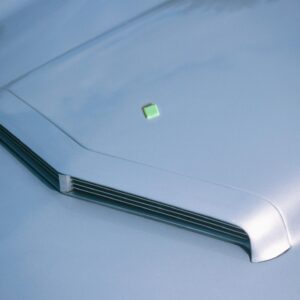For some, the scorching sun is a welcome sight for beachgoers and the like. For car owners, however, it could spell trouble for their beloved vehicles.
Prolonged exposure to the harsh ultraviolet (UV) rays can damage their car’s exterior and interior, resulting in issues such as faded paint jobs and cracked leather seats. Fortunately, there are some measures you can take to protect your vehicle from sun damage.
Ways to Protect Your Car From Sun Damage
Here are some of the easiest ways to prevent sun damage on your car:
Maintain the Paint Job
A common effect of UV damage on vehicles is paint deterioration caused by oxidation. The damage accumulates and slowly dulls the paint job, which leads to peeling off.
As such, it’s paramount that you treat the paint job with dual-action polish and a paint oxidation compound. Polishing and waxing are two effective ways you can combat oxidation, so it’s recommended to add them to your car washing routine.
Park in Shaded Spots

Parking in a shaded area helps minimize the impact of sunlight and UV rays on your vehicle. If you don’t have a roofed garage, you should consider parking in a tree-lined street.
If you park in a closed garage where security is guaranteed, you can leave a small gap in one of your windows to help reduce interior temperature and equalize air pressure.
Install Seat Covers
Installing seat covers helps protect your leather or fabric seats. It helps them cool down and protects them from other forms of damage, such as wear and tear, food spillage, and more.
Use Windshield Sun Protectors
Windshield sun protectors are foldable shields made of mylar or aluminum. They negate sunlight and UV rays to help protect your dash and cool down the car seats and interior. They’re easy to use and slide across the dash, so it’s recommended to get a pair to combat the heat.
Clean the Vehicle
Washing your vehicle bi-weekly removes built-up dust and contaminants caused by extreme heat. You can do it the traditional way by handwashing or visiting a car wash near you. You should also wax your vehicle afterward to prolong its shine.
Waxing forms a layer of protection on the exterior of the car that protects its paint from UV rays. It also prevents water spots that may trap dirt and other contaminants.
There are different types of waxes you can use, including pastes, liquids, and sprays. Choosing which wax type you use is up to you, as some of them are harder to apply than others.
However, most professional detailers suggest using paste wax, as it lasts longer. The only downside is that it may be harder to apply for new DIYers.
Use Car Covers
Using car covers prevents sunlight from slowly chipping away at the paint job, as well as maintaining optimal air pressure inside the vehicle. It may seem like a hassle to put and remove it each time, but the lasting effects are worth it.
Condition the Seats
If your seats are made of leather, you may want to look into conditioning them as added protection from the heat. The ideal way of applying leather conditioner is by using it after cleaning the seats.
Before applying a new product, test it out on a hidden spot to ensure it won’t have any negative effects. Use small circular motions to evenly apply the conditioner, then let it sit and dry for at least an hour.

Conditioners help improve the lifespan of your leather seats as they fight off cracks, tears, and stains caused by overexposure to UV light.
Install Tinted Windows
Installing tinted windows has its advantages, including protection from UV light, privacy, and driver safety. In fact, approximately 3,000 crashes in the US were caused by sun glare.
Maintain Tire Pressure
Hot pavement and an underinflated tire may lead to blowouts, which could cause accidents on the road. To prevent this from happening, make sure you constantly check the tire pressure when it’s hot.
The recommended air pressure can be found on the side of your tires. You can also check your vehicle’s specifications in the owner’s manual.
Effects of Sun Damage
Overexposure to sunlight may lead to a variety of issues that could ruin your vehicle’s interior and exterior.
Dashboard Damage
Dashboards are often made from polypropylene, a type of thermoplastic polymer. It tends to break down after a prolonged exposure to sunlight, as the radiation creates free radicals. This results in your dashboard splitting, cracking, or fading.
Upholstery Damage
Similarly, leather seats are susceptible to damage when exposed to the sun. Some common issues you’ll notice include peeling, fading, and cracking.
Leather has natural oils that are prone to evaporate when exposed to sunlight for prolonged periods. As such, the exposed seats will eventually dry out, stiffen, and then crack.
One way to combat this issue is by using car covers, as they absorb sunlight and prevent overexposure to heat.
If you’re looking for options, seats made of polyester and nylon are more durable against sunlight. In fact, they’re used to make outdoor furniture because of how resistant they are to UV damage.
Peeling Paint Job
Lastly, the car’s exterior and paint job is most susceptible to damage as they’re the ones exposed to sunlight. Much like leather seats, your car’s paint job will naturally fade and lose its color if it’s constantly exposed to the sun.
This occurs when paint is directly exposed to the powerful UV rays that sunlight emits. They react with the pigments in the paint, which causes the color to fade out.
Any information provided on this Website is for informational purposes only and is not intended to replace consultation with a professional mechanic. The accuracy and timeliness of the information may change from the time of publication.


















